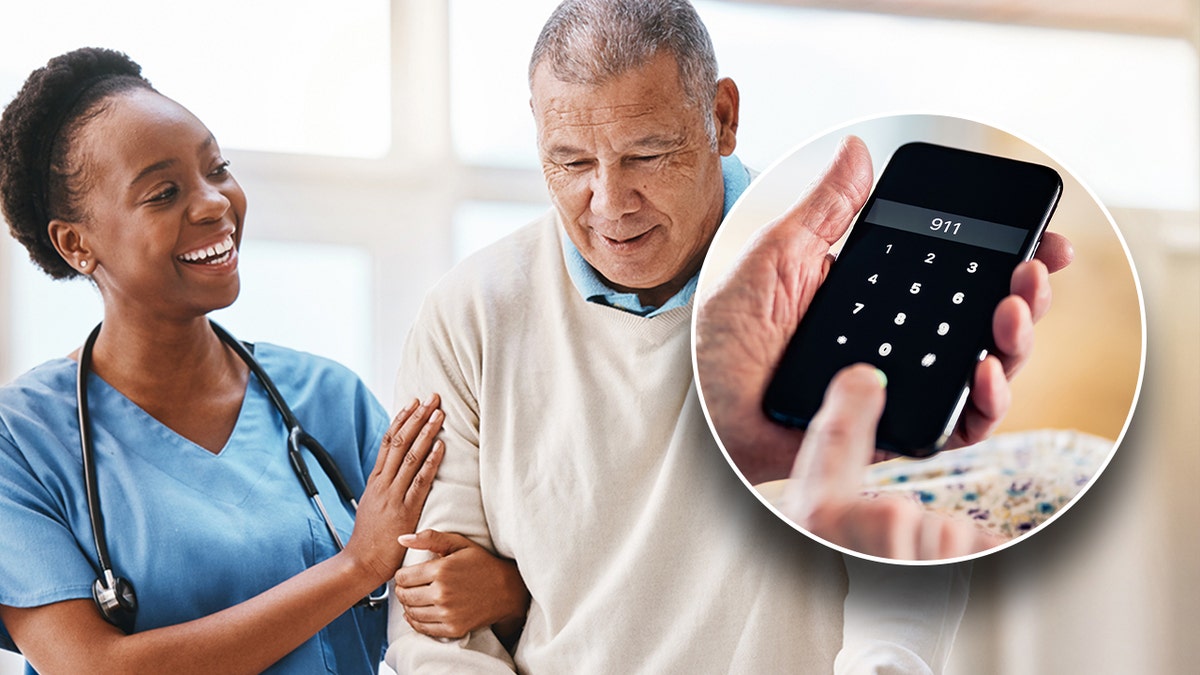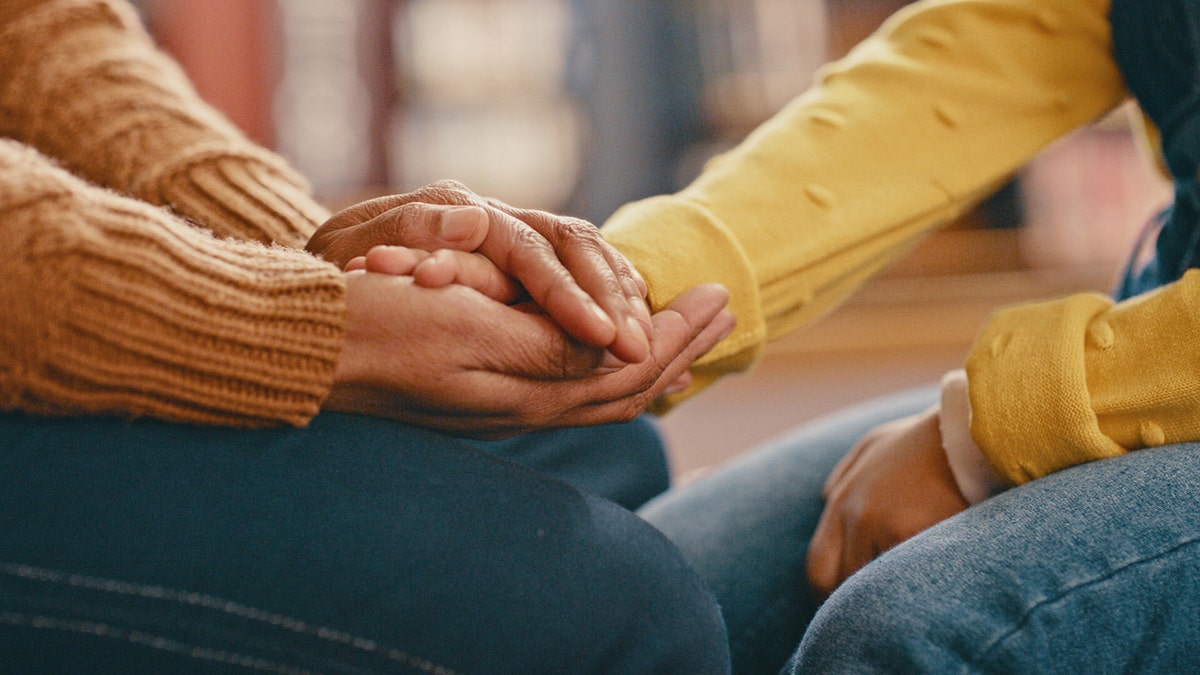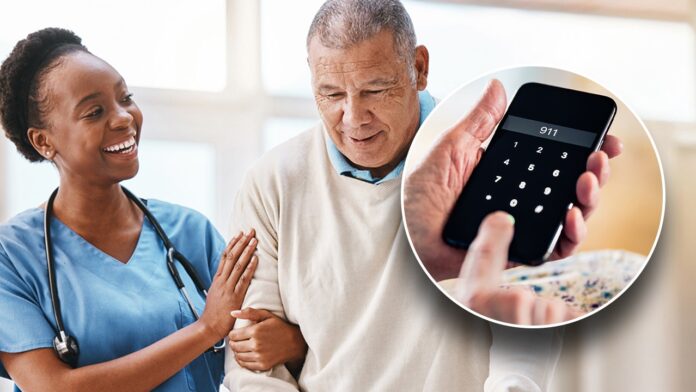Strokes are the fifth leading cause of death in the United States and a leading cause of disability, according to the American Stroke Association.
“Stroke is injury to the brain from impairment of blood flow,” Dr. Sandeep Kumar, Department of Neurology, Stroke Division, Beth Israel Deaconess Medical Center in Boston, Massachusetts, told Fox News Digital in an email.
“A normal blood supply is vital for the brain to function normally and for preservation of its structure. Interruption of the blood flow deprives the affected parts of the brain from receiving oxygen and other nutrients with the result that these tissues start disintegrating rapidly.”
5 WOMEN’S HEALTH TIPS TO PREVENT AND DETECT STROKES, ACCORDING TO CARDIOLOGISTS
When a person suffers from a stroke, it can affect their ability to speak and comprehend, Dr. Kumar noted.
There can also be a loss of sensation in different parts of the body, loss of vision or an inability to walk or stand.

If you notice someone experiencing stroke symptoms, it’s vital to get them medical help right away. (iStock)
Read on to learn more about stroke symptoms, preventative measures you can take and the road to recovery.
- What are the different types of strokes?
- What are the main symptoms of a stroke?
- What can I do to prevent a stroke?
- What is the recovery process after having a stroke?
1. What are the different types of strokes?
There are two main types of strokes: ischemic and hemorrhagic.
Ischemic strokes are by far the most common, accounting for 87% of all strokes, according to the American Stroke Association.
“Blood flow to the brain can be compromised when the blood flowing to the brain in a cerebral artery is blocked off either by a blood clot or a plaque. This is called an ischemic stroke,” Dr. Kumar told Fox News Digital.
A less-common type of stroke is hemorrhagic. In those cases, “the blood vessel supplying the brain ruptures leading to bleeding within the brain tissue. Bleeding can directly damage brain cells or deprive the surrounding tissues from receiving adequate oxygen and nutrients,” Dr. Kumar said.
SHARON STONE LOST $18 MILLION AFTER 2001 STROKE: ‘PEOPLE TOOK ADVANTAGE OF ME’
There’s also a transient ischemic attack (TIA), which is called a “warning stroke” or a “mini-stroke,” according to the American Stroke Association.
This “warning stroke” is caused by a temporary blockage of blood flow to the brain. If you have this type of stroke, don’t disregard it. Call 911 right away.

There are several different types of strokes a person could face, but ischemic strokes are by far the most common. (iStock)
Strokes with an unidentifiable cause are labeled as cryptogenic strokes, according to the American Stroke Association.
2. What are the main symptoms of a stroke?
The following are common symptoms of TIA or a stroke, as highlighted by the National Institutes of Health (NIH).
- Sudden confusion, trouble speaking, or trouble understanding speech
- Sudden numbness or weakness, especially on one side of the body
- Sudden severe headache with no known cause
- Sudden trouble seeing from one or both eyes
- Sudden trouble walking, dizziness, or loss of balance or coordination
The NIH notes that symptoms can occur rapidly, or slowly, developing over hours and sometimes even days.
An acronym important to remember is F.A.S.T. Below is how you can identify if someone is having a stroke, using the F.A.S.T acronym, as provided by the American Stroke Association.
F = Face Drooping: “Does one side of the face droop or is it numb? Ask the person to smile. Is the person’s smile uneven?”
A = “Arm Weakness: Is one arm weak or numb? Ask the person to raise both arms. Does one arm drift downward?”
S = “Speech Difficulty: Is speech slurred?”
T = “Stroke is an emergency. Every minute counts. Call 911 immediately. Note the time when any of the symptoms first appear.”
3. What can I do to prevent a stroke?
The Centers for Disease Control and Prevention (CDC) sais that around 80% of strokes are preventable.

One thing you can do to prevent a stroke is to live a healthy lifestyle, filled with proper diet and adequate exercise. (iStock)
While the average age for a stroke is 65 and older, according to Lifespan, the average age is decreasing. In the United States, 10 percent of people who have a stroke are under the age of 45.
“People who develop strokes usually have underlying risk factors,” Dr. Kumar told Fox News Digital.
“The most important among these are high blood pressure, diabetes, high cholesterol, smoking, heart disease, especially a condition called atrial fibrillation.”
CLICK HERE TO SIGN UP FOR OUR HEALTH NEWSLETTER
Kumar noted the importance of screening for these underlying conditions with your doctor. Be sure you’re following advice from your doctor for testing, and follow instructions regarding medication that may be needed if these conditions are found.
Embracing a healthy lifestyle can also help reduce stroke risk.
Kumar noted the following as things you can do to promote a healthy lifestyle and reduce your risk:
- Get regular physical exercise
- Eat a balanced diet
- Ensure good sleep
- Avoid excess alcohol
- Manage stress
- Stop smoking
4. What is the recovery process after having a stroke?
The recovery after a stroke can be long and challenging. Some patients may not reach full recovery.
Not every patient’s road to recovery will look the same.
“Many stroke survivors are left with enduring disabilities that prevent them from getting back to their usual routines. These can include simple tasks like eating, dressing, toileting, bathing or other aspects of self-care,” Kumar wrote in an email to Fox News Digital.
“Others may find that they are unable to engage in other normal day-to-day activities like reading, writing, driving. Even those individuals who have recovered fully feel very vulnerable and cannot shake off the shadow of a stroke on their lives; they may end up curtailing things that they enjoyed, such as going on family vacation, fearful that a stroke may strike again.”
Because of these life-altering changes that stroke survivors endure, they will need support from those around them, including medical professionals and loved ones.
CLICK HERE TO GET THE FOX NEWS APP
The exact needs that a stroke survivor requires in order to recover will vary, depending on each individual’s case. Factors like how severe the stroke was, which area of the brain was affected, how soon a patient received medical attention and the overall health of the patient can all play into the recovery process, according to Northwestern Medicine.

Stroke survivors will need support from those around them to help them get through their difficult recovery. (iStock)
“Needs of a stroke survivor for coping and adjustments are varied. A number of patients who have lingering impairments, such as limb weakness, walking difficulty, speech impairment, benefit greatly from rehabilitation,” Kumar said.
“Rehabilitation includes physical and occupational therapy that is targeted towards restoring the lost function, such as improving limb strength in a limb that was weakened from the stroke. In other instances, the loss of function cannot be completely regained; rehabilitation in such [a] situation can be helpful in developing compensatory adaptation strategies that can help an individual transition to independence. These may include the use of prosthetics or mobility devices.”
CLICK HERE TO SIGN UP FOR OUR HEALTH NEWSLETTER
Some patients also have cognitive impairments they deal with after a stroke, as well as other pragmatic issues, Kumar noted, such as those related to employment, finances and housing.
“Social workers and other community support can be essential to help navigate these challenges,” Kumar said.
